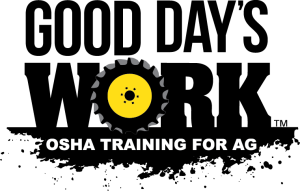If your operations’ equipment is involved in an accident on a public highway, can you defend yourself? Can you show you took steps to train your operators on road safety, made your equipment visible and comply with transportation regulations?

Consider preparing your employees and equipment for road travel as part of your risk management strategy. Once you’re out on the highways, you have limited control over hazardous situations, however you can be proactive with safety and manage what is within your control. We want you want to be safe and legal.
Let’s consider two separate initiatives that could protect you, your coworkers and the driving public: preparing equipment and preparing employees.
Prepare Equipment
We can all agree drivers on public roads have plenty of distractions. Preparing your equipment for road travel can be key to avoiding collisions or accidents on our roadways. The costs of accidents, downtime, equipment repair, medical costs etc., can far exceed your investment in time and equipment to be safe.
Conduct a 360° walk around for your equipment and make observations. All lights should be working, and should be clean every time you pull onto the highway. Slow moving vehicle (SMV) signs are required for all implements of agriculture moved on the highway.
Now ask yourself, if you’re a motorist coming up from behind, is your implement clearly marked? If it’s just meeting bare standards, consider going beyond what regulations require and modify the equipment yourself to make it more visible. It can be as easy as upgrading to LED lighting or adding more reflective tape to make it more traffic friendly.


Transporting Farm Equipment - Purdue Extension PPP-83
Prepare Employees
Make it known and reinforce throughout the harvest season that safety is a priority and an expectation. Operators need to know and follow the rules of the road and be adequately trained. Here are some key considerations:
- Operators are responsible for the 360° walk around inspection every time they use the roadways. Not just to look for lights and SMV emblem, but items for safe travel such as tires, leaks, load securement and hitching components to name a few.
- Manage the driver’s distractions. Full focus should be on the road with no multi-tasking. No use of cell phone activities such as talking, texting, GPS or social media. Managers should not be calling or texting employees while they drive.
- Minimize frequency or prohibit extra riders as they can block your view and be a distraction from seeing hazards such as mailboxes, bridges, soft or steep shoulders, potholes or other objects. Operators need to be looking far down the road monitoring and anticipating what traffic will do. Wear seat belts if provided. Extra riders can be particularly vulnerable in a collision.
- Discuss alternate routes to avoid busy roadways especially during high traffic periods such as rush hour or when conditions are less than ideal. Yes, this may entail longer, more time-consuming routes.
Summary
Discuss with your employees the importance of being vigilant with farm equipment on the road, and take time to prepare your equipment. Committing to sound safety practices when moving equipment on roadways will help keep you harvesting, trucking and conducting field operations this fall. It’s vital that everyone Get Home Safe.



